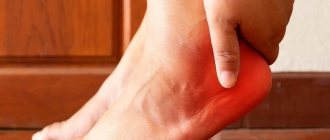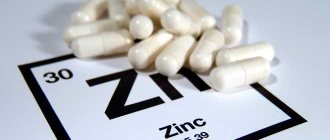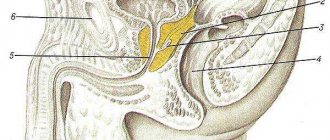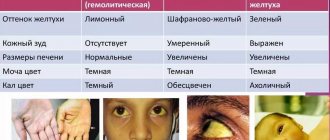(5 ratings, average: 3,40 out of 5)
Home » Fungal diseases
Changes in weather, disruptions in the body - all this can provoke unexpected manifestations on the face. These “effects” include cracks in the corners of the mouth (angular cheilitis), which worsen in winter and cold autumn. They are in no hurry to disappear, since the reason may not be simple. The secondary appearance of jams requires serious treatment.
Causes of cracks in the corners of the lips
As a rule, cracks in the corners of the lips are a symptom of a lack of important elements in the body, for example, vitamin deficiency, dysbacteriosis, etc. In such cases, a person feels weak, looks pale and tired, gets tired quickly, his skin dries and peels, and his hair falls out.
It is worth considering the main causes of cracks in the corners of the mouth.
| Cause | Description |
| Avitaminosis | Deficiency of vitamins, and in particular vitamin B2, is a common cause of seizures, which are also called angular cheilitis. Vitamin deficiency can occur when the absorption of the vitamin is impaired (if the patient has intestinal or stomach diseases) or when it is insufficiently supplied to the body. A lack of vitamins is very often accompanied by the appearance of cracks. Symptoms: first, the corners of the mouth turn red and then crack, swelling of the lips occurs, inflammation of the tongue, burning in the eyes and conjunctivitis may begin. |
| Injuries | If a person has a permanent injury to the corners of the mouth, the sore is often accompanied by the presence of bacteria in the body. In children, the same germs can cause cracked lips due to unwashed hands, sand getting into the mouth, etc. Symptoms: erosion in the corner of the lips becomes crusty, constantly bleeds, and does not heal. As a rule, this applies not only to the corners of the mouth, but also to the lips, chin, etc. |
| Infections | Zaeda can be caused by only two types of infections: fungi and streptococci. They provoke the development of an inflammatory process in the upper layers of the skin. Both microbes are part of the pathogenic sphere that exists on the skin of all people, so in order for them to become active and form cracks, certain conditions are necessary. Symptoms: redness of the corners of the mouth, cracking, slow healing. |
| Herpes | Another cause of cracks is the filtering herpes simplex virus. Most often, children as young as two or three years old can become infected with it. The reasons for relapse are a sharp deterioration of immunity associated with stress, frustration, overwork, hypothermia, etc. Symptoms: in addition to cracks - blisters on the lips, tingling, soreness, crust formation on the ulcer. |
| Fungal infections | Another common cause of cracks is candidiasis of the corners of the lips, otherwise known as yeast star. Pathogenic fungi multiply due to recent colds, various diseases such as diabetes, blood diseases, stomach, intestinal diseases, etc., taking medications with hormones, drugs that suppress the immune system, antibacterial drugs, etc. Symptoms: a whitish coating on the ulcer, which can be removed quite easily. |
| Allergies | The most common allergic reaction to personal care products or cosmetics, extreme heat or severe frost can cause chapped lips. Symptoms: peeling of the skin around cracks, which appears immediately after exposure to adverse weather or contact with an allergen. |
| Environmental exposure | Severe cold or wind can cause angulitis. Symptoms: cracks appear immediately after exposure to bad weather conditions. |
| Bad habits | Seizures appear due to the presence of bad habits in a person, such as smoking, frequent licking of lips, presence of any objects in the mouth, and constant consumption of alcoholic beverages. The first three habits described affect the skin in the corners of the mouth through many factors. Frequently holding the tip of a writing utensil in the mouth leads to infection with pathogenic microbes. Drinking alcohol weakens the human body and contributes to the greater development of existing diseases. Symptoms: cracks in the corners of the lips, which disappear after eliminating the described habits. |
| Diseases of the lips (cheilitis in the photo) |
Symptoms: dry facial skin, reddened corners of the lips, cracks, swelling and dryness of the lips, small scales on them.
Symptoms: bloody crust on the ulcer, the ulcer itself is soft but painful. |
| Problems with the gastrointestinal tract | Eating may indicate diseases of the stomach or intestines caused by an excess of toxin-producing E. coli in the body. Cracks are precisely an allergy to the stick. |
| Bite features | Cracked corners of a person's mouth may indicate an incorrect bite. If one jaw protrudes more than the other, the lips become irritated. |
| Tuberculosis | Patients with tuberculosis often suffer from tuberculosis seizures in serious condition. Symptoms: sharp pain of erosion, undermined edges of cracks, poor general condition of the patient. |
| Syphilis | A common crack may appear to be a chancre, which is a sign of primary syphilis. If left untreated, the type will become secondary. Symptoms: a gray-whitish coating on the crack, pain only when opening the mouth and talking, with a hard base, if it is stretched, it becomes rounded. |
Licking skin
Licking your lips too often can also cause cheilitis. Additionally, symptoms such as redness, dryness, and the appearance of crusts on the surface of the epidermis occur; after their removal, red spots appear.
It is necessary to get rid of a bad habit. According to many experts, constant licking of the mouth is a consequence of stress or neurosis, so it is recommended to visit a psychiatrist or neurologist; you may need to take sedatives or sedatives.
Diagnostics
Mandatory stages of diagnosis are visual examination and testing.
An examination for suspected angulitis includes the following steps:
- visual inspection;
- taking a smear to determine the type of pathogen and prescribe the correct treatment.
The following comprehensive diagnostic methods may be prescribed as additional measures:
- blood analysis;
- Analysis of urine;
- Ultrasound;
- consultation with a specialist doctor: dentist, otolaryngologist, endocrinologist, etc.
Drugs in tablets for oral administration
In complex cases, complex treatment of angulitis may be required; tablets are added to topical agents.
For fungal infections, antimycotic drugs are prescribed:
- Nystatin. The active substance is nystatin. The daily dose of the drug is 1,500,000-3,000,000 units, it is calculated by the doctor, and can be increased depending on the degree of damage. The tablets are taken in 3-4 doses. The duration of the course of treatment is from 10 to 14 days; on the doctor’s recommendation, longer use of the drug is possible.
- Lamicon. Active ingredient: terbinafine (terbinafine hydrochloride). Has a wide spectrum of action. It tends to accumulate in tissues, which ensures long-term effects of the drug. The drug is taken once a day, the dose for adults is 1 tablet of 250 mg. The duration of the course of treatment for skin diseases is from 2 to 4 weeks, the duration of treatment is determined by the doctor.
For mixed forms of the disease, antibiotics are prescribed:
- Chemomycin (Azithromycin). The active ingredient is azithromycin. Belongs to azalides, a new subgroup of macrolide antibiotics. Suppresses the reproduction and growth of bacteria, in high concentrations it has a bactericidal effect. It has a wide spectrum of antimicrobial effects. Adult patients are prescribed to take 1 tablet of 500 mg per day, the treatment period is 3 days.
- Tetracycline. Belongs to the group of antibiotics of the same name. Active against streptococcal and staphylococcal pathogens. Suppresses protein synthesis of pathogenic bacteria. Tablets are taken every 6 hours, a single dose is from 250 to 500 mg of the drug. The duration of treatment is from 5 to 7 days.
Pharmacists recommend using immunomodulators as therapeutic agents, but only as prescribed by a doctor.
Treatment methods
Angulitis should be treated exclusively under the supervision of an experienced specialist. You should definitely go to the clinic and take all the necessary tests. Only a doctor can prescribe medications that will really help, after first finding out the cause of the cracks.
Local
Select an ointment after diagnosis by a doctor.
To quickly get rid of cracks, you can purchase a special ointment sold at any pharmacy.
Among the most popular options are the following:
- nystatin and levarin ointments - quickly relieve pain and have a powerful wound-healing effect, good if there is a fungal infection in the body;
- mercury and erythromycin ointments are antibiotics with bactericidal properties;
- Fluconazole, Lamisil - eliminate candidiasis, can also be used for prevention;
- Vishnevsky ointment is an anti-inflammatory agent that quickly heals wounds and regenerates tissue.
Immunity restoration
For angulitis, drugs that stimulate the immune system are very important:
- Imudon is a medicine for getting rid of inflammatory processes on the lips and in the oral cavity;
- Likopid is an immunostimulating drug, prescribed for immunodeficiency, relapses of common diseases, etc.;
- Arbidol is an antiviral medicine produced in capsules;
- thymus gland preparations actively stimulate the immune system and are prescribed only by a doctor.
Vitamin replenishment
Oil solutions of vitamin A and E
For treatment at home, the body requires replenishment of vitamins A and E , which must be consumed orally in the form of a solution.
Locally, ointments and creams with natural herbal compositions that have a calming effect are used for the same purposes.
To generally replenish the body's deficiency of essential vitamins, experts recommend eating foods with a high content of nutrients, spending more time in the fresh air, and taking prescribed vitamin complexes.
Difference from herpes
Angulitis and herpes lesions of the lips should not be confused. Herpes rarely appears in the corners of the mouth; its first manifestations are pain, redness of the skin, and tingling. Inflammation begins with the formation of a bubble of fluid that rises above the skin. Over time it breaks down. The surface of the affected area becomes covered with ulcers, then a crust forms. In this case, cracks in the skin do not form.
To accurately determine the causes of the inflammatory process, you will need to consult a doctor; the success of treatment depends on the correctness of the diagnosis.
Features of treatment for adults
Nutrition during treatment should be as balanced as possible, with a high content of vitamins, the deficiency of which often causes cracks in the corners of the lips.
During therapy, it is recommended to avoid spicy and salty foods, which irritate the affected areas and prevent the wound from healing. It is worth including red meat and offal dishes in your diet.
For better absorption of such foods, you should also eat foods rich in vitamins C or E, for example, as many fresh vegetables as possible or olive oil.
How to cure cracks in the corners of the lips in children
It is important to determine what exactly is deficient in the child’s body.
After this, special children's vitamin complexes are prescribed.
Correction of nutrition is required, adding dairy products, eggs, beef, liver, fish, cereals and brewer's yeast to the menu.
Important! If cracks appear constantly, it is necessary to conduct an additional in-depth examination.
Avitaminosis
A lack of vitamin B12 in the body can cause angular fissures, and with them swelling and redness of the lips, inflammation of the tongue, conjunctivitis, and burning in the eyes. This condition is observed in spring vitamin deficiency, insufficient intake of the vitamin from food and in diseases that lead to disruption of its absorption by the body. In the first two cases, it is recommended to compensate for the lack of vitamin by including in the diet a sufficient amount of meat and dairy dishes, eggs, cabbage, spinach, legumes, and whole grain cereals. In the latter case, you need to see a doctor and undergo a course of treatment.
Source: depositphotos.com
Traditional methods
When a seizure appears, many decide not to use pharmaceutical drugs, preferring traditional medicine. Its adherents recommend products that can be used to smear cracks in the corners of the lips:
- cucumber juice;
- compress of crushed plantain leaves;
- application to erosion of a clove of garlic cut in half;
- washing with soda solution;
- rinsing with strong tea leaves;
- propolis ointment. One hundred grams of butter is mixed with ten grams of propolis, heated in a water bath, and then used as an ointment for seizures.
Vitamins and dietary supplements
Complex treatment includes vitamins and dietary supplements. Attention is paid to preparations containing iron, vitamins A, B2, E, PP, and nicotinic acid.
Vitamin complexes are designed to strengthen the immune system and enhance its activity:
- Multi Tabs,
- Duovit,
- Aevit,
- Vitrum.
Vitamins A, C, E and B2 promote rapid healing of skin wounds.
Local use of dietary supplements is no less effective:
- Provitam oil. The composition includes a complex of vitamins (A, D, E, K), lutein, peach oil. Softens and nourishes the skin, eliminates inflammation and irritation, heals wounds, fights fungal and streptococcal pathogens. Apply to affected areas of the skin 3-4 times a day.
- Phytolon oil. Contains components obtained by processing kelp and peach oil. It has a softening, healing, analgesic and anti-inflammatory effect, eliminates peeling. A couple of drops of the drug are applied to the skin, after 20 minutes the excess is removed with a soft cloth.
Prevention
Don't forget chapsticks in cold weather!
Preventive measures consist of maintaining a normal water balance in the body, which will help avoid drying out the skin of the lips and the formation of cracks.
It is necessary to drink enough liquid, and in cold weather use greasy lipstick. During periods of vitamin deficiency, it is mandatory to take multivitamin complexes.
Only a competent and clear approach to the problem can help to establish their origin and quickly get rid of them. There is no need to stop halfway when eliminating cracks in the corners of your lips. It is better for a specialist to conduct a basic examination that will prevent relapses.
Syphilis
One of the elements of primary syphilis - chancroid - is often disguised as an ordinary syphilis. In this case, the crack is usually painless, covered with a silvery-white coating and has a compaction at the base, which, when the lips are stretched, takes on an oval shape. When a secondary infection (bacterial or streptococcal) is added, the syphilitic lesion deepens and turns into a discomforting ulcer. Treatment of such a disorder is carried out under the supervision of a venereologist and consists primarily of destroying the causative agent of syphilis - Treponema pallidum.
Source: depositphotos.com
How to treat seizures during pregnancy
Treatment of angulitis during pregnancy should be discussed with your doctor. Some of the popular drugs are far from safe to use during this period.
When choosing, preference is given to topical products, these can be Medela PureLan cream, herbal-based antiseptic ointments, for example, Boro-plus.
The doctor can prescribe antibiotics or antifungal drugs only if the inflammatory process lasts too long and cannot be treated locally.
If seizures occur frequently, it is recommended to take a blood test for glucose levels.











